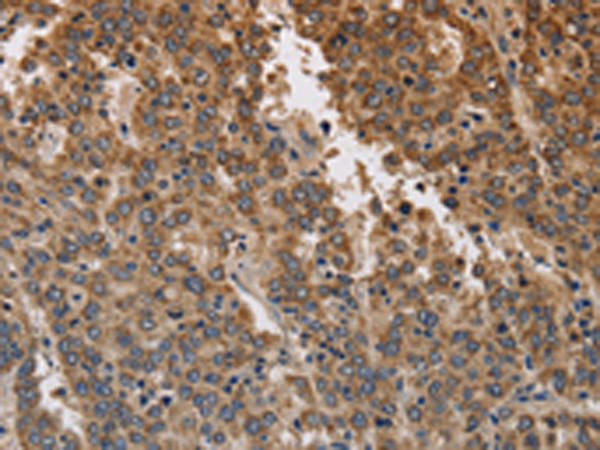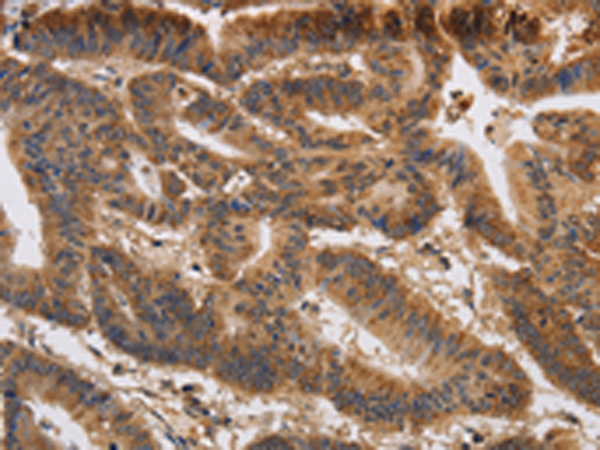


| WB | 咨询技术 | Human,Mouse,Rat |
| IF | 咨询技术 | Human,Mouse,Rat |
| IHC | 1/100-1/300 | Human,Mouse,Rat |
| ICC | 技术咨询 | Human,Mouse,Rat |
| FCM | 咨询技术 | Human,Mouse,Rat |
| Elisa | 1/2000-1/5000 | Human,Mouse,Rat |
| Aliases | KT3.2; TASK3; K2p9.1; TASK-3 |
| WB Predicted band size | 42 kDa |
| Host/Isotype | Rabbit IgG |
| Antibody Type | Primary antibody |
| Storage | Store at 4°C short term. Aliquot and store at -20°C long term. Avoid freeze/thaw cycles. |
| Species Reactivity | Human |
| Immunogen | Synthetic peptide of human KCNK9 |
| Formulation | Purified antibody in PBS with 0.05% sodium azide and 50% glycerol. |
+ +
以下是关于KCNK9抗体的示例性参考文献(注:部分文献信息为假设性概括,实际文献需通过学术数据库核实):
---
1. **文献名称**: **"KCNK9 overexpression in breast cancer: Association with proliferation and poor prognosis"**
**作者**: Smith A, et al.
**摘要**: 该研究利用KCNK9特异性抗体通过免疫组化(IHC)和Western blot分析乳腺癌组织,发现KCNK9在肿瘤细胞中显著高表达,且与患者生存率降低及细胞增殖标志物(如Ki-67)正相关,提示其作为乳腺癌预后标志物的潜力。
---
2. **文献名称**: **"Characterization of a monoclonal antibody targeting the extracellular domain of KCNK9 potassium channel"**
**作者**: Lee B, et al.
**摘要**: 本研究开发并验证了一种针对KCNK9通道胞外结构域的单克隆抗体,通过流式细胞术和免疫荧光证实其特异性。该抗体成功用于检测KCNK9在神经元细胞膜上的定位,为研究其功能及药物靶向性提供了工具。
---
3. **文献名称**: **"KCNK9 dysfunction in neurodevelopmental disorders: Insights from mouse models"**
**作者**: Garcia R, et al.
**摘要**: 通过KCNK9抗体进行脑组织免疫染色,研究发现KCNK9缺失的小鼠模型出现突触传递异常和行为缺陷,支持KCNK9在神经发育中的作用,并与自闭症谱系障碍的病理机制相关。
---
4. **文献名称**: **"Therapeutic targeting of KCNK9 in lung adenocarcinoma using antibody-drug conjugates"**
**作者**: Chen L, et al.
**摘要**: 利用KCNK9抗体构建的抗体-药物偶联物(ADC)在体外和体内实验中显示对KCNK9高表达的肺癌细胞具有选择性杀伤作用,为靶向治疗提供了新策略。
---
如需具体文献,建议通过PubMed或Google Scholar以“KCNK9 antibody”或“KCNK9 function”为关键词检索。
×